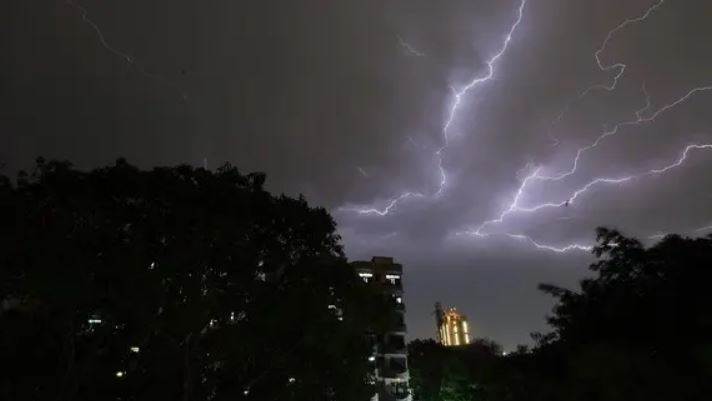Search here

08-Jul-2020
Lightning Strikes Are Natural Hazards We Must Not Look Overlook
Lightning strikes in the country account for an average of 2,500 deaths annually and lightning deaths accounted for 39 percent of the deaths in natural disasters from 1967 to 2018.
The Thiruvananthapuram-based National Centers for Earth Science Studies (NCESS) set up a Lightning Detection Network in six locations in the country to notify lightning strikes and issue a warning to the public.
The Meteorological Department has started giving early warning of lightning and thunderstorms since last year. Apart from this, in 2018 the National Disaster Management Agency also issued a detailed guideline related to this. Although lightning incidents have been seen since the beginning of civilization, but how the clouds get hot, it has not yet been fully understood.
What we have been able to understand is that in the case of thunderstorms, the upper end of clouds has a positive charge, while the lower one has a negative charge.
When the hot air below the water droplets collides with the cold clouds filled with snow, a thunderstorm begins. In this process, there is constant friction between the water droplets and the ice cubes.
When a hot area of the sky suddenly discharges itself, lightning strikes. This phenomenon occurs between two regions of clouds or between two clouds. When this discharge occurs between two regions of the clouds, we experience the event of lightning at one place and for a long time.
But when this discharge is between two clouds, then we see the light going from one place to another. When such an event occurs between the lower part of the cloud and the ground, then we call it lightning.
While lightning flashes in and out of clouds can cause damage to planes, lightning strikes between the lower part of the cloud and the ground, which we call lightning, cause loss of life and property.
Lightning can have the effect of up to several kilometers. It has a very fast speed of about 1,50,000 kilometers per second, and it heats up its surrounding atmosphere considerably. Lightning strikes occur on Earth fifty to hundred times per second.
Every year more than 20,000 people are directly affected by lightning and several thousand people die from it. According to the National Crime Records Bureau, in the year 2018, there were about 6,891 deaths due to natural abuse.
Of these, 2,357 people died due to lightning, which was 34.2 percent of deaths due to natural misuse. The fall of celestial lightning can disrupt the power supply, it can cause forest fires and damage to raw houses.
READ HERE MORE : India Vs China LAC Standoff Is Avoided For Now
Most of the celestial lightning victims in India are rural villagers. Dirty water is a conductor of electricity. Therefore, people often fall prey to celestial lightning in waterlogged fields. A study by the Indian Institute of Tropical Meteorology, Pune, shows that between 2004 and 2009, 86 percent of the people killed in Maharashtra due to lightning strikes were farmers working in their fields.
This is the season for celestial lightning. The main safety rule to avoid is 30/30. That is, the lightning should go inside the house before the cloud is roaring before it is counted to 30 and the last time the cloud should not come out for 30 minutes after the thunder. While in the field, the two legs should sit together with the head bowed. The risk increases when lying down.
The farm should go to dry land. Rubber soles and rubber tires do not provide protection from lightning. One should not stand under the tree. One should stay away from bicycles, tractors, and metal farming equipment. And electrical appliances should be plugged inside. By adopting these measures, celestial electricity can be avoided.

Content Writer/Journalist
I am a content writter !
Join Our Newsletter
Subscribe to our newsletter to receive emails about new views posts, releases and updates.
Copyright 2010 - 2025 MindStick Software Pvt. Ltd. All Rights Reserved Privacy Policy | Terms & Conditions | Cookie Policy